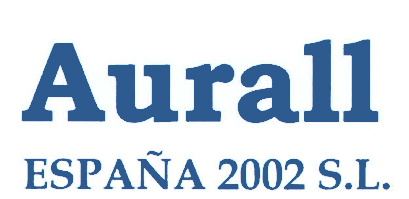
INSTRUCCIONES PARA UNA SOLDADURA FUERTE SEGURA Y EFICIENTE
INSTRUCCIONES
Las informaciones en este documento incluyen las reglas básicas para obtener una buena soldadura furte; es necesario cumplir estas reglas si se quiere obtener la máxima ventaja de las aleaciones en plata.
El cumplimiento de estas reglas permite conseguir un alto nivel de eficiencia en la soldadura furte y minimizar los posibles riesgos que pudieran derivar de un uso incorrecto de las aleaciones y de los fundentes.
Regla 1 - UTILIZAR SOLO PARTES LIMPIAS
Todos los metales deben ser limpios y sin ningunas formas de contaminación como incrustaciones, mugre, petróleo, grasa, etc. El incumplimiento de esta precaución, hará que las juntas sean inestables y que hayan desagradables emisiones de humo.
Las partes chapadas deberian ser tratadas con cautela.
Regla 2 - ELEGIR LA ALEACIÓN CORRECTA Y EL RELATIVO FUNDENTE
Elegir la correcta combinación de aleación y fundente (si necesario), con referencia a la tabla incluida en el catálogo.
Nunca se utilize una aleación con bajo campo de fusión con un fundente con alto campo de funsión y viceversa.
Regla 3 - UTILIZAR SIEMPRE UNA ADECUADA CANTIDAD DE FUNDENTE
No es importante sólo elegir el fundente adecuado, sino es esencial también que una cantidad suficiente sea utilizada como protección del área de juntas durante todo el ciclo de soldadura fuerte.
Por regla general, demasiado fundente es mejor que demasiado poco. Si el fundente se agota, la fluidez de la aleación es limitada, y hay el peligro que la aleación no protegida por el fundente volatilize provocando emisión de humo.
Regla 4 - CALENTAR DE MANERA UNIFORME
El propósito de la soldadura fuerte es calentar las partes que se deben unir con una temperatura superior de 50ºC al punto de fusión de la aleación, de manera que pueda deslizar dentro o a lo largo de los contornos de las juntas.
La aleación con fusión más bajo tiene un punto de fusión debajo de 650ºC, entonces la soldadura occurre debajo de 700ºC - en un color rojo oscuro. Por eso es importante evitar la exposición directa al sol o a otras luces brillantes porque enmascaran el color de la zona de las juntas.
Cuando el punto de fusión de la aleación se hace mayor, la temperatura de soldadura fuerte necesaria se indica mediante una intensificación del color rojo. El color rojo brillante, antes de que el color se vuelva amarillento, es alrededor de 900ºC.
Cuando se utiliza un soplete, calienten el área de las juntas, concentrándose en las secciones más pesadas para desarrollar un calor uniforme. Siempre concentren el calor en las juntas y nunca intenten derretir la barra de soldadura por calentamiento directo con una llama. La barra de aleación de soldadura se debe aplicar sólo cuando las juntas están a la temperatura correcta.
Eviten las fuentes de calor intensas, muy concentradas, por ejemplo, si se hace una soldadura con un soplete, utilicen una buena llama espesa.
El recalentamiento es una mala práctica. No sólo puede dar lugar a juntas de calidad inferior, sino también pueden ser emitidos humos nocivos, tanto del fondente como de la aleación.
Regla 5 - ASEGURAR QUE EXISTA UNA VENTILACIÓN SUFICIENTE
Nunca, bajo ninguna circunstancia, la soldadura furte se lleva a cabo en espacios confinados o en condiciones de ventilación restringida. Agachar la cabeza sobre la pieza en trabajo es una práctica peligrosa y debe evitarse.
Regla 6 - BUSCAR CONSEJO SI OBSERVA ALGO ANORMAL
Si al soldar fuerte se produce un efecto anormal, como por ejemplo la difusión copiosa de humos, o cualquier dificultad en la aplicación de los materiales de soldadura, deténganse inmediatamente y pidan consejo. Sólo porque no se siente ningún efecto perjudicial no significa necesariamente que no estén en situación de riesgo.
PRECAUCIONES
Las aleaciones que contienen zinc y cadmio, si utilizadas bajo condicciones inadecuados, puede que provoquen humos que si inhalados, son nocivos para la salud.
En el caso del zinc, el efecto puede ser desagradable pero temporal. Mientras que los humos del cadmio son venenosos y en muchos casos se han demostrado mortales.
Estos humos pueden ocurrirse si las aleaciones son:
1) utilizadas sin un fundente
2) utilizadas con el fundente incorrecto
3) utilizadas con un fundente insuficiente
4) sobrecalentadas arriba de sus rangos de fusión normal
5) usadas en los metales sucios
Similares consideraciones se aplican a los fundentes que, si se calientan arriba de sus normales temperaturas de trabajo, pueden perdir sus características, liberando gases irritantes que no deben ser inhalados.
Cuidado particular debe tomarse en el manejo de fundentes que a veces pueden irritar las pieles sensibles, y se racommanda el uso de guantes o cremas protectoras aplicadas antes de soldar. Como los fundentes con bajo punto de fusión contienen compuestos de fluoruro, están clasificados como tóxicos, y nunca deben ser ingerido.
Debe subrayarse que, observando estas precauciones básicas, las aleaciones y los fundentes pueden ser utilizados con perfecta seguridad.
Las aleaciones de plata-cobre-zinc-cadmio se utilizan con éxito en la industria por más de 35 años en una amplia gama de aplicaciones.